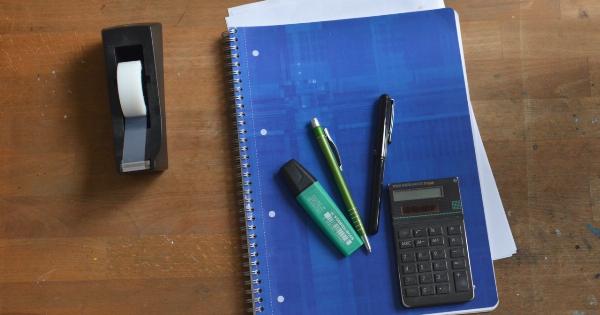Pain in the mid-region can be very uncomfortable and sometimes debilitating. The mid-region could refer to the abdominal area, the lower back region, or the pelvic area.
There are several causes of pain in the mid-region, including injury, inflammation, structural abnormalities, and general wear and tear. This article will provide tips and strategies that can help prevent pain in your mid-region.
1. Exercise Regularly
Regular exercise is essential for maintaining overall health and preventing pain in the mid-region. Exercise helps to strengthen muscles and improve flexibility, which can reduce the risk of injury.
It also helps to improve circulation, which can reduce inflammation and promote healing.
When exercising, it’s essential to engage in activities that help to strengthen the mid-region muscles. These muscles include the abdominal muscles, the lower back muscles, and the pelvic muscles.
Examples of exercises that can help strengthen these muscles include:.
- Planks
- Cat-cows
- Supermans
- Crunches
- Squats
- Lunges
2. Maintain a Healthy Weight
Maintaining a healthy weight is also critical in preventing pain in the mid-region. Excess weight can put a strain on the mid-region muscles, leading to pain and discomfort.
It can also increase the risk of developing structural abnormalities, such as hernias and disc problems.
To maintain a healthy weight, it’s essential to engage in regular exercise and a healthy diet. This diet should be rich in fruits, vegetables, whole grains, lean proteins, and healthy fats.
It’s also important to avoid foods that are high in saturated and trans fats, as well as sugary and processed foods.
3. Practice Good Posture
Good posture is essential for preventing pain in the mid-region. Poor posture can put a strain on the mid-region muscles, leading to pain and discomfort. It can also lead to structural abnormalities, such as a bulging disc or hernia.
To practice good posture, it’s important to sit and stand up straight. Keep your shoulders back and your head up. Avoid slouching or leaning forward. If you work at a desk, make sure your chair and computer are positioned correctly.
Take frequent breaks and stretch your back and neck muscles regularly.
4. Stay Hydrated
Staying hydrated is also essential for preventing pain in the mid-region. Dehydration can lead to cramping and muscle strain, which can cause pain in the mid-region.
To stay hydrated, it’s recommended that you drink at least eight to ten glasses of water per day. You can also consume water-rich foods such as fruits, vegetables, and soups.
5. Practice Safe Lifting
Safe lifting practices are essential for preventing pain in the mid-region. Improper lifting techniques can put a strain on the mid-region muscles, leading to pain and discomfort. It can also lead to structural abnormalities, such as a herniated disc.
When lifting heavy objects, it’s essential to bend your knees and keep your back straight. Lift with your legs, not your back. Avoid twisting or bending at the waist while lifting.
6. Wear Comfortable Footwear
Wearing comfortable footwear is also essential for preventing pain in the mid-region. Uncomfortable shoes can put a strain on the back and lower legs, which can lead to pain in the mid-region.
When selecting footwear, choose shoes that are comfortable, supportive, and provide adequate arch support. Avoid high heels and shoes with a narrow toe box.
7. Manage Stress
Stress can also contribute to pain in the mid-region. When experiencing stress, the body releases hormones such as cortisol, which can lead to inflammation and pain.
To manage stress, it’s important to engage in stress-reducing activities such as meditation, yoga, or deep breathing exercises. It’s also essential to get adequate sleep and practice good sleep hygiene.
8. Avoid Smoking
Smoking can also contribute to pain in the mid-region. Smoking can lead to poor circulation, which can impair healing and increase inflammation.
If you currently smoke, it’s important to quit. There are several programs and resources available to help you quit smoking, including nicotine replacement therapy, support groups, and counseling.
9. Get Regular Checkups
Regular checkups with your healthcare provider are essential for preventing pain in the mid-region. Your healthcare provider can identify and treat any underlying conditions that may be contributing to your pain.
They can also provide guidance on how to prevent pain in the mid-region.
During your checkup, your healthcare provider may perform a physical exam, order diagnostic tests, and recommend lifestyle changes such as exercise and healthy eating habits.
10. Treat Pain Promptly
If you experience pain in the mid-region, it’s essential to treat it promptly. Ignoring pain can lead to further injury and chronic pain. The sooner you treat your pain, the quicker you can prevent further damage.
Treatment options for mid-region pain may include rest, ice, heat, over-the-counter pain medications, physical therapy, or surgery.
Conclusion
Preventing pain in the mid-region is essential for maintaining overall health and quality of life.
Engaging in regular exercise, maintaining a healthy weight, practicing good posture, staying hydrated, practicing safe lifting, wearing comfortable footwear, managing stress, and getting regular checkups are all essential for preventing pain in the mid-region. If you do experience pain, it’s important to treat it promptly and seek medical attention if necessary.






























